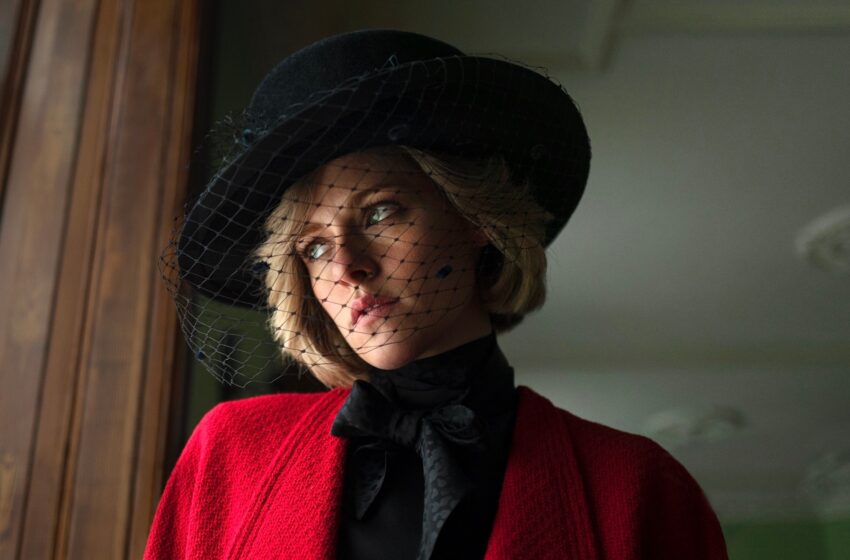
Review: Spencer – A Pretentious and Retrograde Two-Hour Advert for Chanel and KFC
Content warning: eating disorders, self-harm and suicidal ideation. Spoilers for the whole film.
A poorly executed fishbowl film set over one royal Christmas weekend in 1991, Spencer directed by Pablo Larraín and starring Kristen Stewart as Lady Di herself was one-sided, shallow and distasteful. The film I watched did begin with a content warning, but Spencer was still two slow hours of character-light but eating disorder-centric fluff. Spencer was in every direction it dared to take, irresponsible and immature.
As highbrow as Instagram arthouse, as deep as a 10-second TikTok video, this hazily shot feature took its time before introducing its main character. Diana was overwhelmingly characterised as a victim in this film, foreshadowed by the shot pheasant in the opening scene – an overwrought extended metaphor which by the end was laughable. As soon as Stewart opened her mouth, it was like watching a teenager pretend to be posh, she never was Diana. Sounding to me, more like Emma Watson, modern posh, Stewart’s voice was a constant whisper, a sign of a strained accent. Head permanently lopsided, Stewart physically embodied a parody of Diana more often than the real thing. Maybe in a YouTube music video compilation set to sad pop music, will Stewart’s Diana be riveting and watchable.
Stewart was only ever convincing, natural, in a few scenes as a loving mother, but I did frequently feel for Diana as the film intended. Though this feeling was fleeting, as Stewart’s Diana drowned in the impulsive and irrational. There was no light or dark. The setting of a contained Christmas weekend a gimmick as it reduced all the actors, including Timothy Spall, to hammy bit-players and the structure meant there was no context which could have rebalanced and saved the film. Why Diana was such a desperate and insecure mess that one solitary weekend was never established. This was linked to there being no scenes of juxtaposition to showcase Diana as media-savvy, charismatic, empathic or, as Spencer only told the audience, a “weapon”. This unsatisfying plotting was a particular shame, as I did enjoy Pablo Larraín’s English-language directorial debut Jackie which adeptly anchored the former First Lady’s grief with snippets from her husband’s entire ill-fated presidency.
Moreoever, Jackie had an embedded morally conflicting theme about the schemes required to fix history whereas Diana was only ever really given one pathetic moment of self-absorption when she asked aloud how will she be remembered in a thousand years. This was asked to her dresser, a fictitious Maggie played by Sally Hawkins who was the only actor who wasn’t forced but her character’s presence was baffling. In my opinion, the ending, which was spurred on by this Maggie the magical lesbian, or could-be lesbian, was just a marketing ploy to generate buzz for a film that managed to not flesh out any characters. The staff were cardboard caricatures and Stewart’s Diana’s entitled treatment towards her new dresser epitomised the careless, accuracies-be-damned and cringey childish direction Spencer took. Set to awful Homeland jazz, Diana’s moods made this overtly theatrical film fly off the handle. One over the top moment, like one per TV episode, could have worked, but the pearls, Anne Boleyn, the corridor-running, Charles, and the crossfire shooting hazard was unbearable. 6 people walked out of my cinema.
A highbrow failure, Spencer only ever hit the mark on coercion as abuse. There were short powerful moments where Diana was micromanaged with her clothes, her activities and psychologically weakened. The royals at first were presented as miserable bastards, fitting the upper-class stereotype of wanting to be austere and frugal, in this case safe at home with their palace’s heating. Charles was portrayed as strongly idiotic, blabbering insensitively about his kooky environmentalism in relation to eating disorders, and was undeveloped. The Queen spoke about ending dictatorships in her Christmas speech on TV, in a scene that was republican polemic but unintentionally funny. Sally Hawkins’s Maggie appeared throughout to suggest what is being shown may be one-sided, a narrative cop-out.
The only point the film was clear in making was its product placement. Kristen Stewart, well-known to those in the know as one of the numerous faces for Chanel, got to wear her shiny branded gold buttons in one scene and her black bag at the end. The only two designer products which were conspicuously obvious. Any positive aspect was ruined by the end. “Cracking up” Diana, who had a three-day cry for help including an above all unfounded scene where she nearly flung herself off some broken stairs – or were they broken – just needed some love despite graphically showing self-harm earlier. Mental health box ticked, Diana basically drove away from her problems, eschewing bad gourmet food to good KFC in an idyllic family scene where the letters KFC engulfed left the screen. (I would have preferred it, if she learned to cook.) The trailer was better than the film.
A disregard for history, and for any of the real individuals involved, together with an ultimately mediocre lead performance made this Diana biopic a missed chance to capitalise on this latest cultural moment around the Royal family. Spencer is an already forgettable film which will be surely swallowed up by subsequent imaginings. Spencerthe self-described “fable based on real tragedy” was an exhausting watch and itself earned no critical significance, with already a poor box-office, but it did upon layers of name-recognition, make some unnecessary noise.
(Image Credit: Vogue/Neon & Topic Studios)


